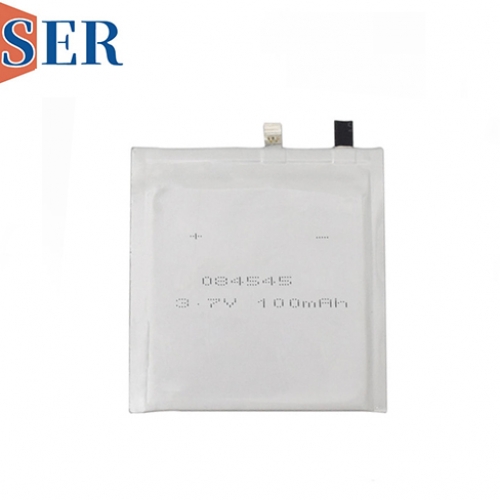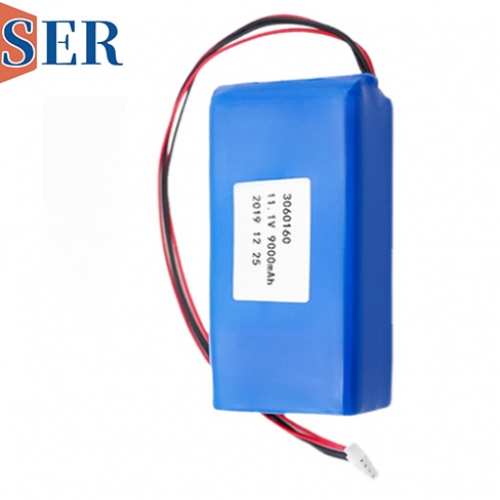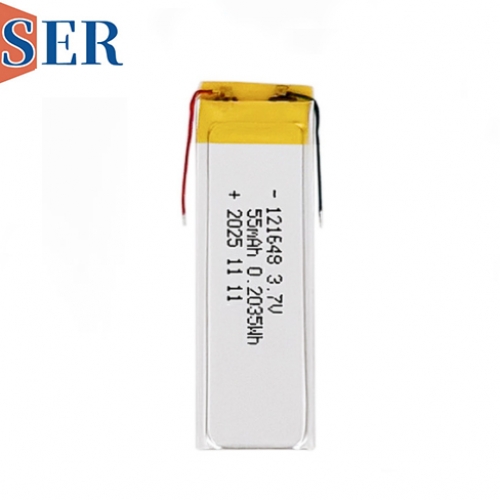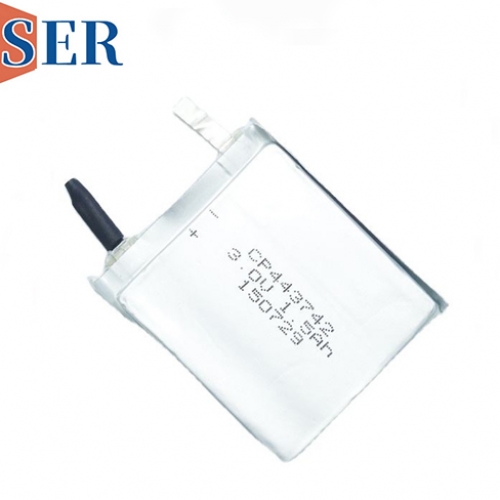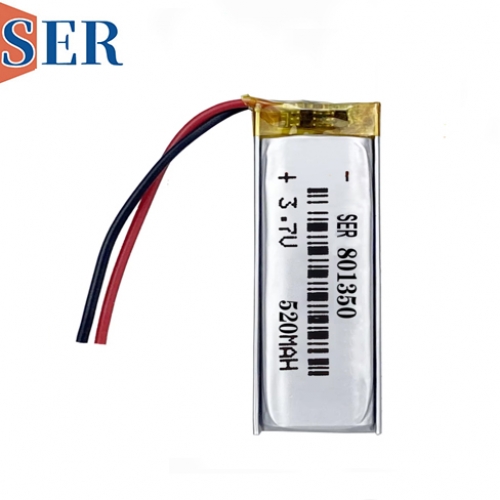Exploring the Types of Lithium Batteries for Heated Clothing: A Comprehensive Guide
Exploring the Types of Lithium Batteries for Heated Clothing: A Comprehensive Guide
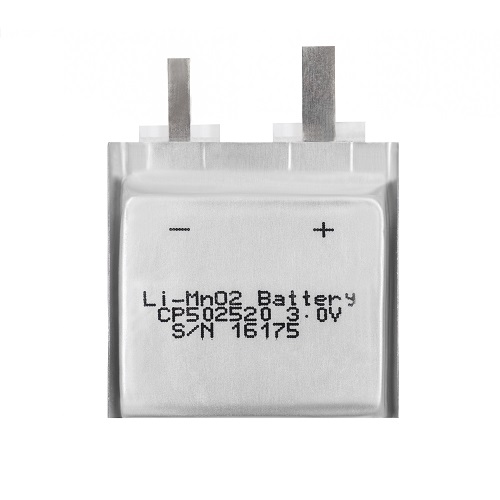
Abstract
Heated clothing has emerged as a revolutionary innovation, providing warmth and comfort in cold environments. At the heart of this technology lies the battery, which powers the heating elements integrated into the garments. This article delves into the various types of batteries used in heated clothing, including lithium-ion battery, nickel-metal hydride battery, ultra-thin battery, and lithium polymer batteries. By examining their characteristics, advantages, and limitations, we aim to provide a comprehensive understanding of the battery options available for heated clothing, enabling consumers and manufacturers to make informed decisions.
1. Introduction
In cold climates or during outdoor activities in chilly weather, staying warm is essential for both comfort and safety. Heated clothing offers a convenient and effective solution by incorporating heating elements that can be controlled to provide customized warmth. However, the performance and efficiency of heated clothing heavily depend on the type of battery used to power it. Selecting the right battery is crucial to ensure optimal heating duration, reliability, and overall user experience. This article explores the different types of batteries commonly employed in heated clothing, highlighting their unique features and suitability for various applications.
2. Lithium-Ion Batteries: The Powerhouse of Heated Clothing
2.1 High Energy Density: A Key Advantage
Lithium-ion batteries have become one of the most prevalent choices for heated clothing due to their exceptional energy density. Energy density refers to the amount of energy a battery can store per unit volume or mass. Lithium-ion batteries offer a high energy-to-weight ratio, meaning they can store a significant amount of energy while remaining relatively lightweight. This is particularly important for heated clothing, as it allows for longer heating durations without adding excessive bulk to the garment.
For example, a lithium-ion battery with a high energy density can power a heated jacket for several hours on a single charge, providing continuous warmth during extended outdoor activities. This makes lithium-ion batteries ideal for applications where long-lasting heat is required, such as skiing, hiking, or working in cold warehouses.
2.2 Lightweight Construction: Enhancing Comfort
In addition to their high energy density, lithium-ion batteries are known for their lightweight construction. The components used in lithium-ion batteries, such as the lithium cobalt oxide cathode and graphite anode, contribute to their relatively low mass. This lightweight nature is a significant advantage for heated clothing, as it minimizes the additional weight that users have to carry.
When wearing heated clothing, users want to feel as comfortable as possible, without being weighed down by heavy batteries. Lithium-ion batteries address this concern by providing a power source that is both efficient and lightweight, allowing users to move freely and comfortably while staying warm.
2.3 Reliable Performance: Consistent Heating
Lithium-ion batteries offer reliable performance in heated clothing applications. They have a stable voltage output throughout their discharge cycle, ensuring consistent heating of the garment. Unlike some other battery types that may experience a significant drop in voltage as they discharge, lithium-ion batteries maintain a relatively constant voltage, which translates to a steady and even distribution of heat.
This reliable performance is crucial for maintaining user comfort and satisfaction. Users can rely on their heated clothing to provide consistent warmth, regardless of the battery's state of charge. Additionally, lithium-ion batteries have a low self-discharge rate, meaning they lose very little energy when not in use. This allows users to store their heated clothing with the battery attached for extended periods without worrying about significant energy loss.
2.4 Longer Heating Durations: Extended Comfort
One of the most appealing features of lithium-ion batteries in heated clothing is their ability to provide longer heating durations. Due to their high energy density, lithium-ion batteries can store more energy than many other battery types, enabling them to power the heating elements for extended periods.
For instance, a high-capacity lithium-ion battery can keep a heated vest warm for up to 8-10 hours on a single charge, depending on the heating level selected. This extended heating duration is particularly beneficial for outdoor enthusiasts who engage in activities that last several hours, such as camping trips or long hikes. It eliminates the need for frequent battery replacements or recharges, providing uninterrupted warmth and comfort.
3. Nickel-Metal Hydride Batteries: A Reliable Alternative
3.1 High Capacity: Storing Ample Energy
Nickel-metal hydride (NiMH) batteries are another commonly used option for heated clothing. These batteries are known for their high capacity, which means they can store a large amount of energy. The high capacity of NiMH batteries allows them to power heated clothing for extended periods, similar to lithium-ion batteries.
NiMH batteries use a hydrogen-absorbing alloy as the negative electrode and nickel oxyhydroxide as the positive electrode. This chemical composition enables them to store a significant amount of energy, making them suitable for applications where long-lasting heat is required. For example, a NiMH battery with a high capacity can provide several hours of heating for a heated jacket, ensuring users stay warm during cold weather activities.
3.2 Long Charging Lifespans: Durability and Cost-Effectiveness
One of the key advantages of NiMH batteries is their long charging lifespans. Charging lifespan refers to the number of charge-discharge cycles a battery can undergo before its capacity significantly degrades. NiMH batteries can typically withstand hundreds of charging cycles, making them a durable and cost-effective choice for heated clothing.
Compared to some other battery types, such as nickel-cadmium batteries, which suffer from a "memory effect" that reduces their capacity over time, NiMH batteries do not exhibit this problem. They can be charged at any time, regardless of their current state of charge, without affecting their overall performance. This makes NiMH batteries easier to use and maintain, as users do not have to worry about fully discharging the battery before recharging it.
3.3 Performance in Cold Temperatures: Reliable Operation
While NiMH batteries are relatively heavier than lithium-ion batteries, they perform well in cold temperatures. Cold weather can have a significant impact on battery performance, reducing their capacity and ability to deliver power. However, NiMH batteries are more resistant to the effects of cold compared to some other battery types.
In cold environments, NiMH batteries can still provide a reliable power source for heated clothing, ensuring that users stay warm even in freezing conditions. This makes them a suitable choice for outdoor activities in winter, such as ice fishing, snowboarding, or winter hiking. The ability to perform well in cold temperatures is a crucial factor for heated clothing batteries, as users often rely on them in harsh weather conditions.
4. Ultra-Thin Batteries: Flexibility and Lightweight Design
4.1 Flexibility: Seamless Integration
Ultra-thin batteries have gained popularity in heated clothing due to their flexibility. These batteries are designed to be thin and pliable, allowing them to conform to the shape of the garment. This flexibility enables seamless integration of the battery into the heated clothing, without adding bulk or restricting movement.
For example, ultra-thin batteries can be placed in pockets or compartments within the heated jacket or vest, where they can bend and flex with the user's body movements. This ensures that the battery does not cause any discomfort or inconvenience, and the heated clothing maintains its natural fit and feel. The flexibility of ultra-thin batteries also makes them suitable for use in various types of heated clothing, including gloves, socks, and hats.
4.2 Lightweight: Minimal Additional Weight
In addition to their flexibility, ultra-thin batteries are extremely lightweight. They are designed to be as thin as possible while still providing sufficient power to heat the clothing. The lightweight nature of ultra-thin batteries is a significant advantage for heated clothing, as it minimizes the additional weight that users have to carry.
When wearing heated clothing, users want to feel as if they are wearing regular garments, without the added burden of heavy batteries. Ultra-thin batteries address this concern by providing a power source that is barely noticeable in terms of weight. This allows users to move freely and comfortably, without being weighed down by the battery.
5. Lithium Polymer Batteries or called Lipo battery: Thin and Lightweight with High Performance
5.1 Thin and Lightweight Design: Ideal for Flexible Clothing
Lithium polymer batteries are known for their thin and lightweight design. They are constructed using a polymer electrolyte instead of a liquid electrolyte, which allows for a more compact and flexible battery structure. This thin and lightweight design makes lithium polymer batteries suitable for thinner or more flexible heated clothing designs.
For example, lithium polymer batteries can be easily integrated into heated gloves or socks, where space is limited, and a thin battery profile is essential. The flexibility of lithium polymer batteries also enables them to conform to the shape of the garment, providing a comfortable and unobtrusive power source. This makes them an ideal choice for heated clothing that requires a high degree of flexibility and mobility.
5.2 High Energy Density: Efficient Power Storage
Similar to lithium-ion batteries, lithium polymer batteries offer high energy density. They can store a significant amount of energy in a relatively small and lightweight package. This high energy density allows lithium polymer batteries to power heated clothing for extended periods, providing reliable warmth.
The ability to store a large amount of energy in a thin and lightweight battery is particularly advantageous for heated clothing applications. It enables manufacturers to design garments that are both functional and aesthetically pleasing, without compromising on performance. Users can enjoy long-lasting heat without having to carry bulky batteries.
5.3 Low Self-Discharge Rate: Long-Term Energy Retention
Lithium polymer batteries have a low self-discharge rate, meaning they lose very little energy when not in use. This is an important feature for heated clothing batteries, as users may not use their heated garments every day. The low self-discharge rate ensures that the battery retains its charge for an extended period, allowing users to pick up their heated clothing and use it immediately without having to recharge it first.
For example, if a user stores their heated jacket with a lithium polymer battery during the summer months, the battery will still have a significant amount of charge when they retrieve it in the winter. This convenience is highly valued by users, as it eliminates the need for frequent recharging and ensures that the heated clothing is always ready for use.
5.4 Relatively Higher Cost: A Consideration for Consumers
While lithium polymer batteries offer many advantages, they are relatively more expensive compared to some other battery types. The manufacturing process of lithium polymer batteries is more complex, which contributes to their higher cost. This cost factor may be a consideration for consumers when choosing heated clothing, especially for those on a budget.
However, the high performance and benefits of lithium polymer batteries, such as their thin and lightweight design, high energy density, and low self-discharge rate, may justify the higher cost for some users. For applications where flexibility, mobility, and long-lasting heat are essential, lithium polymer batteries can provide a superior solution, despite their higher price point.
6. Conclusion
The choice of battery for heated clothing plays a crucial role in determining the performance, comfort, and overall user experience. Lithium-ion batteries offer high energy density, lightweight construction, and reliable performance, making them a popular choice for a wide range of heated clothing applications. Nickel-metal hydride batteries provide high capacity, long charging lifespans, and good performance in cold temperatures, offering a reliable alternative.
Ultra-thin batteries are valued for their flexibility and lightweight design, enabling seamless integration into various types of heated clothing. Lithium polymer batteries combine thin and lightweight construction with high energy density and a low self-discharge rate, making them suitable for thinner or more flexible heated clothing designs, although they come at a relatively higher cost.
Ultimately, the selection of the appropriate battery type for heated clothing depends on factors such as the desired heating duration, weight considerations, flexibility requirements, and budget constraints. By understanding the characteristics and advantages of each battery type, consumers and manufacturers can make informed decisions to ensure that heated clothing provides optimal warmth, comfort, and performance in cold environments. As technology continues to advance, we can expect further improvements in battery performance and cost-effectiveness, driving the continued growth and innovation in the heated clothing market.

